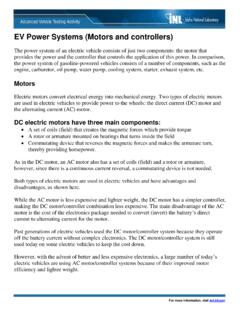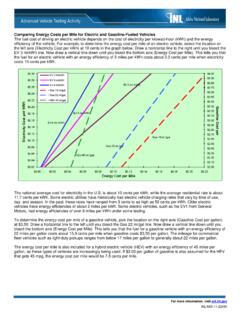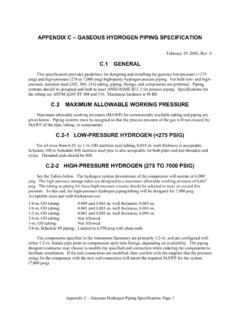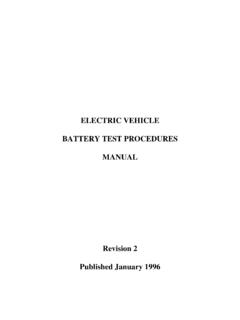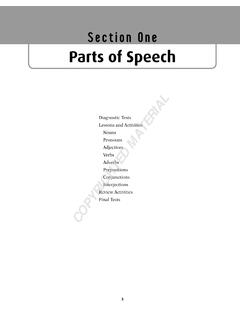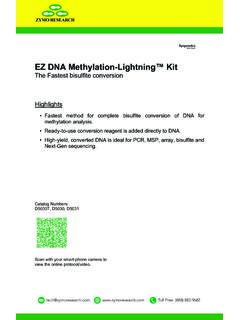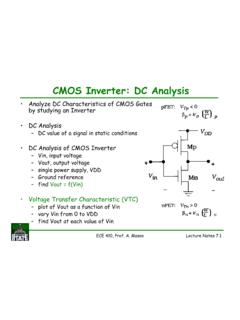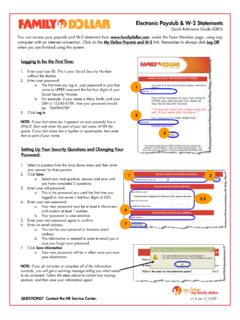Transcription of DC Fast Charging Infrastructure 50 kW to 350 kW
1 DC fast Charging Infrastructure 50 kW to 350 kW Barney Carlson Idaho National Laboratory Energy Storage & Advanced Vehicles INL/CON-16-39573 INL s Electric Vehicle Infrastructure (EVI) Lab Testing and evaluation results from advanced Charging systems supports: Support codes and standards development and harmonization Grid modernization initiative Measurement evaluation metrics System efficiency EM-field emissions Power quality Response to dynamic grid events Cyber security vulnerability assessment Wide range of grid input power ofrom 120 VAC to 480 VAC 3 o400 kVA total capability Sub-system and full vehicle testing capabilities 2 Current Technology: DC fast Charging CHAdeMO and SAE CCS 50 kW power transfer 480 VAC 3 75 A circuit 3 SAE J1772 / CCS Current Technology: DC fast Charging Tesla Super Charger Network 120 kW power transfer to each vehicle Charging complex (up to 8 Super Chargers at one site location) 500 kVA from kV utility electric grid feed Stepped down at site to 480 VAC 3 (600 A) 4 Pocatello, ID photo courtesy of Jim Francfort Test Results: DC fast Charging ABB Terra 53 CJ while Charging a 2015 Nissan Leaf Constant Current Mode AC to DC efficiency Power Factor input current THD Phase current unbalance 5 Current Technology: DC fast Charging INL s test results: ABB Terra 53 CJ while Charging a 2015 Nissan Leaf Moderate phase to phase unbalance measured during constant current mode 6 Current Technology: DC fast Charging INL s test results: ABB Terra 53 CJ while Charging a 2015 Nissan Leaf 7 Future Technology: Extreme fast Charging Extreme fast Charging (XFC) Goal: charge in <10 minutes 150 kW to 350 kW For comparison.
2 Gasoline refueling 10 gallons in 1 minute (~20,000 kW and ~330 kWh) Infrastructure requirements (each XFC) 480 VAC 3 225 A to 525 A circuit (150 to 350 kW) 8 Future Technology: Extreme fast Charging Discrete circuit breaker and wiring sizes may limit / discretize the power level choice Available breaker examples: 400A, 500A, 600A, etc. Potential issues Distance / availability of 12 kV grid feed near the site Mass of the charge cord and connector Standardization (CHAdeMO, SAE CCS, Tesla, etc.) Cost: component costs, installation costs, demand charges, etc. CHAdeMO and CCS 150 kW (350A DC) Charging standards in progress / near completion First CHAdeMO 150kW installations expected in 2017 Both CHAdeMO and CCS are working towards 350 kW 9 Recharge Rates of Various Methods Recharge Rate Currently up to 120 kW 6 mile/min Refuel rate for liquid fuel is limited by EPA to 10 gal/min (40 CFR ) >300 mile/min Proposed 350 kW fast charge ~20 mile/min 10 Mass of Charger Connector and Cable As charge power increases current and conductor size increases Conductor size per NFPA 70E Lifting mass limitation (OHSA) 50 lbs.
3 For one person Higher battery voltage: reduced charge current and therefore reduced cable size and mass impacts all other vehicle high voltage component requirements 11 Connector and Cable Cooling With active cooling of the cable and connector Pros: Smaller wire gauge and connector Reduced size, mass, cable stiffness Cons: Resistive losses increase with smaller wire gauge Cooling system power Total system cost higher Tesla published patents on cooling for charger connector and cable 12 Summary INL s test results shows: CHAdeMO DC fast charger 50 kW input power 92% efficiency Power Factor Ongoing effort to study the feasibility of Extreme fast Charging Goal: charge in <10 minutes 150 kW to 350 kW 13 More Information This work is supported by the Department of Energy s EERE Vehicle Technologies Program Acknowledgement

